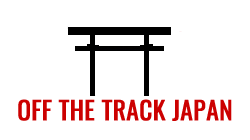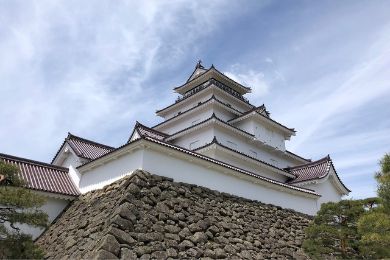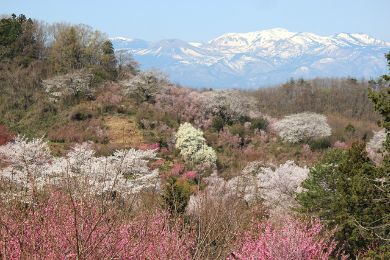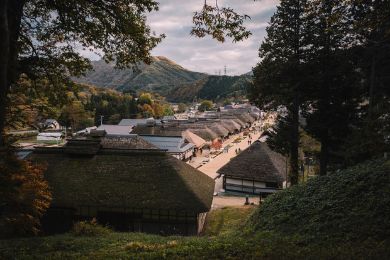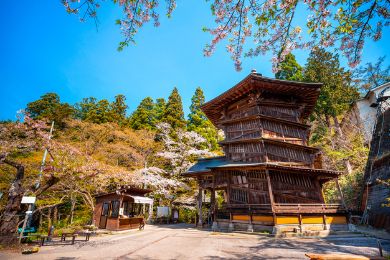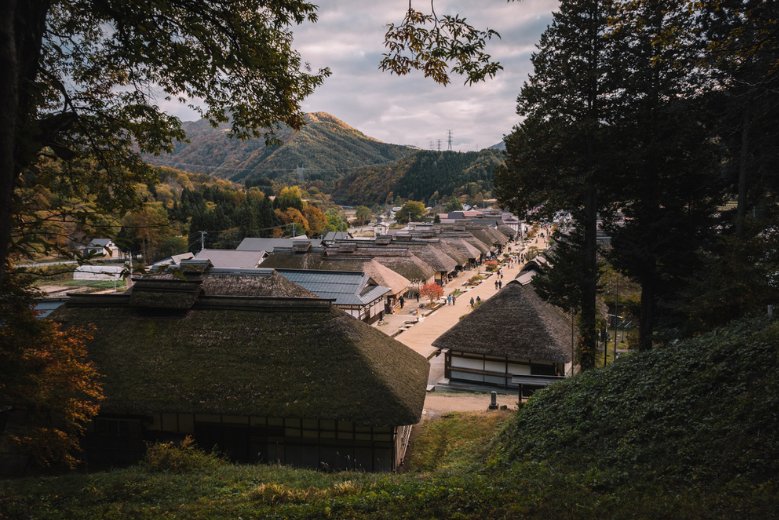
Ouchijuku (大内宿, Ōuchijuku) is a preserved rural and historic post town along the Aizu-Nishi Kaido trade route which connected the modern day towns of Aizuwakamastu and Nikko. Post towns served as a rest stop for travellers, merchants, and samurai on their way to Edo (Modern day Tokyo) as required by the emperor as a way to control wealth and influence during Japan’s feudal era.
Today, Ouchijuku stands preserved as it would have been in the Edo Period (1603-1868), with most of the modern amenities like power and telephone buried underground to maintain the historic atmosphere. The unpaved main street is lined with traditional thatched buildings (minshuku inns, restaurants, souvenir shops).
One of the best vantage points of this historical town is found at the town’s northern side. This vantage point provides visitors with a view of the town’s main corridor and preserved district. We recommened 2-3 hours for exploring Ouchijuku.
Local Cuisine
One unique dish to try in Ouchijuku is Negi Soba, where Soba noodles are eaten with a long green onion, rather than chopsticks. Just be sure not to eat the whole onion before you finish your soba.
Former Honjin
For a glance at what life was like in Ouchijuku during the Edo Period, the Former Honjin (Inn for high ranking individuals) has been converted to a folk museum. The Honjin enables visitors to see what sleep accommodations were like, along with many artifacts, clothing pieces and more.
Explore Fukushima
Top Attractions
Aizuwakamatsu
City with a rich samurai history
Tsuruga Castle
Replica castle in Aizuwakamatsu
Hanamiyama
Mountain for Flower and Cherry Blossom Viewing
Ukedo Elementary School Earthquake Ruins
Ruins of the Ukedo Elementary School post Tsunami
Ouchijuku
Preserved Edo Period Post Town
Hours and Admission (Ouchijuku Former Honjin)
- Hours: 9:00am - 4:30pm
- 250JPY
- Average Time Spent: 20 minutes
Accessing Ouchijuku
Accessing Ouchijuku can be a little challenging due to the remote nature of this mountain village, however it is possible to reach the town by car, by bus, and taxi.
From Aizuwakamatsu Station, take the JR Tadami Line (turns into the Aizu-Tetsudo line at Nish-wakamatsu station) through to Yunokamionsen station. This journey will take approximately 35 minutes and cost 1050 JPY (Covered by the JR Pass).
From Yunokamisonsen Station, you can either take the “Saruyu” bus, that runs between Yunokamionsen Station and Ouchi-juku, taking about 20 minutes and operates from around mid-March to November, approximately hourly (460 JPY one way, not covered by the JR Pass), or you can take a taxi from Yunokamionsen station from there (costing around 2000JPY one way).
Discover Japan like never before with the Japan Rail Pass (JR Pass), your ticket to seamless travel across the Japan. Unlock the full potential of Japan’s extensive rail network, renowned for its punctuality, comfort, and convenience.
Discover Japan like never before with the Japan Rail Pass (JR Pass), your ticket to seamless travel across the Japan. Unlock the full potential of Japan’s extensive rail network, renowned for its punctuality, comfort, and convenience. Read More…
Forget the hassle of purchasing individual tickets for every journey. The JR Pass offers exceptional value for money, available in flexible durations ranging from 7 to 21 days, allowing you to tailor your travel experience to suit your itinerary. Read More…
Where to Stay in Aizuwakamatsu
Kutsurogijyuku Shintaki
Kutsurogijyuku Shintaki is a traditional ryokan in Aizuwakamatsu offering relaxing hot spring baths, tatami-mat rooms, and kaiseki-style dining.
Aizuwakamatsu Washington Hotel
Western-style chain hotel located conveniently near to Aizu-Wakamatsu Station, making it an ideal hotel for exploring the area.
Book Now (Booking.com)Book Now (Agoda)